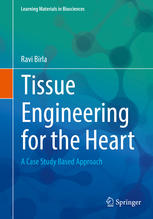

Most ebook files are in PDF format, so you can easily read them using various software such as Foxit Reader or directly on the Google Chrome browser.
Some ebook files are released by publishers in other formats such as .awz, .mobi, .epub, .fb2, etc. You may need to install specific software to read these formats on mobile/PC, such as Calibre.
Please read the tutorial at this link: https://ebookbell.com/faq
We offer FREE conversion to the popular formats you request; however, this may take some time. Therefore, right after payment, please email us, and we will try to provide the service as quickly as possible.
For some exceptional file formats or broken links (if any), please refrain from opening any disputes. Instead, email us first, and we will try to assist within a maximum of 6 hours.
EbookBell Team

4.7
76 reviewsThis book covers the fundamentals of tissue engineering for the heart, starting with the basics of organ generation, sensors in tissue and organ fabrication, and the current state-of-the-art in stem cell engineering for the heart. With this foundation in place, the remaining chapters focus on specific aspects of the cardiovascular system, starting with heart muscle, then biological pumps, followed by bioartificial ventricles, and finally, bioartificial hearts. Throughout the course of this book, twenty-two in-depth case studies are presented. Each case study has been selected to illustrate specific design schemes for tissue and organ fabrication. This is an ideal book for upper-level undergraduate and graduate students studying tissue engineering and organ regeneration, especially those focused on cardiac regeneration.
This book also:
Includes twenty-two case studies that illustrate specific design schemes for engineering the heart
Provides open-ended discussion questions at the end of each chapter as well as a detailed reference list to encourage further research and reading
Covers the basics of organ fabrication as well as sensor technology and genetic engineering as they relate to tissue and organ fabrication